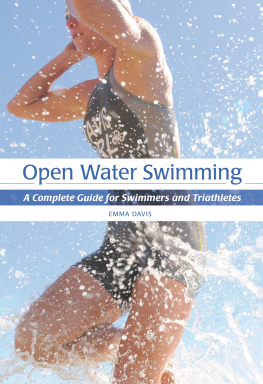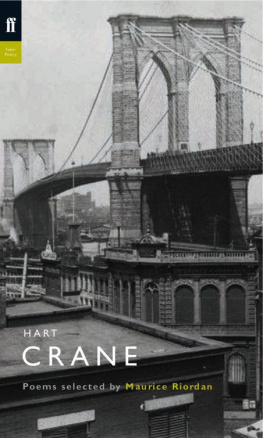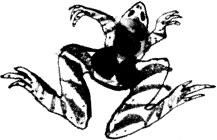Contents
Acknowledgments
I am indebted to various references to the subject in books by J. P. V. D. Balsdon; Miriam Benkovitz; Dea Birkitt; Sara Boutelle; Susan Chitty; Katharine Chorley; Rupert Christiansen; Timothy dArch Smith; Catharine Dinn; Philippe Diol; Lloyd Goodrich; R. P. Graves; H. A. Harris; Alethea Hayter; Anthony Hern; Richard Holmes; Juliette Huxley; Peter Levi (Edition of Pausanias); Leslie Marchand; Robert Bernard Martin; Jeffrey Meyers; Nancy Milford; John Nathan; Jeffrey Richards; Henry Scott Stokes; Andrew Sinclair; Robert Sklar; Kevin Starr; Donald Thomas; David Wainright; Peter Webb; Tim Webb. Particularly relevant was Nicholas Ormes excellent Early British Swimming 55 BC AD 1719, (University of Exeter Press, 1983).
I would also like to thank Hans Christian Adam; Don Bachardy; Paul Cartledge; Adrian Dannatt; Mike Dibb; Dennis Enright; Jeffrey Farrell; Christopher Hawtree; James Henry; David Hockney; the Independent and The Times newspapers; Doris Littlefield; Christopher McKane; Michael Meredith; Iris Murdoch; Frances Partridge; Robert Pavlik; Michael Phelps; Paul Quarrie; Donald Ritchie; Audrey Salkeld; Al Schoenfield; Irv and Margie Seiler; the Amateur Swimming Association; the International Swimming Hall of Fame, Fort Lauderdale; SonyaZorilla; Ian Whitcomb, for various ideas and numerous California swims; Jeremy Lewis, the Sussex breast-stroker and swimmer of Nemi; Alan Ross, for publishing the original article in the London Magazine; and finally David Godwin and Nicholas Pearson of Jonathan Cape for their sympathetic encouragement.

For permission to reproduce illustrations, the author and publishers are grateful to the following: Hans Christian Adam pls. 5, 7, 14; Lucien Aigner pl. 4; Amon Carter Museum, Fort Worth pl. 16; The Architectural Association, London (photo: Andrew Holmes) pl. 15; Collection of Ross J. Bastiaan, O.A.M. (from Images of Gallipoli: Photographs from the Collection of Ross J. Bastiaan, O.U.P. 1988) pl. 8; John Gutmann pl. 10; Harvard Theater Collection (Frederick R. Koch Collection) pl. 11; The Kobal Collection pls. 2, 12, 13; Association des Amis de Jacques Henri Lartigue pl. 21; Prints and Photographs Division, Library of Congress, Washington pls. 19, 20; Gerhard Pulverer Collection (Photo: Fachlabor Fachor) pl. 18; Georg Schfer Collection, Schweinfurt pl. 6; Staley-Wise Gallery, New York pl. 3; The Sutcliffe Gallery, Whitby pl. 9; National Gallery, Washington, Ferdinand Lammot Belin Fund pl. 17.
Every effort has been made to obtain the necessary permissions with reference to copyright material, both illustrative and quoted; should there by any omissions in this respect we apologise and shall be pleased to make the appropriate acknowledgments in any future editions.
About the Author
Charles Sprawson studied at Trinity College, Dublin, deals in nineteenth-century paintings, and recently swam the Hellespont.
About the Book
Haunts of the Black Masseur is Charles Sprawsons famous study of swimming in which he as an obsessional swimmer and diver explores the meaning that different cultures have attached to water. From the god-like Greeks to Virginia Woolf to Mark Spitz, he gives us fascinating glimpses of the great swimming heroes. Laden with references to literature, film, art, musicals, Olympic history, Haunts of the Black Masseur is a unique celebration of Mans relationship with water.
I
The English Ascendancy
If I die, they will do something for my wife.
Captain Webb, by the Niagara Falls
IN THE NINETEENTH century the English were acknowledged as the best swimmers in the world, at a time when a passion for athleticism and for games became their distinguishing feature, and made them an object of fascination to the rest of Europe. They even taught us Swiss how to climb our own mountains, remarked Jung, and make a sport out of it.
London was looked upon as the capital of world swimming. There were six permanent pools, and in the summer floating baths were moored at Waterloo and Westminster bridges. Annual swimming galas took place in most coastal towns, where the shape of the harbour provided a natural amphitheatre, accommodating thousands of spectators. Swimming contests were held in rivers throughout England, and people leapt off the tops of bridges for wagers. A few died. There were fatal leaps off Charing Cross and Tower bridges. The most daring was Samuel Scott. It was his custom to execute a number of acrobatic feats before plunging into the water, and to create a sensation he used to imitate, on a scaffold on Waterloo Bridge, a public execution by hanging. This was to prove his undoing, as in the summer of 1841 the noose slipped and strangled him.
The English never for a moment doubted their pre-eminence. None of the black people that I have ever known approach a first-class English swimmer, stated Webb, the Channel swimmer, and in his view the fastest swimmer the world had seen was E.T. Jones, of Leeds. A Victorian treatise on swimming begins: There is no instance of any foreigner, civilised or uncivilised, whose achievements in the water surpass those of the British. The champions of England sailed to America and returned unbeaten. The great Beckwith beat Deerfoot the Seneca Indian, despite his quarter minute start. The women too were exceptional in their way. The naturalist Richard Jefferies was once watching a wanton young girl by the sea, lying stretched out at the edge of the foam, when suddenly a huge wave curled over and dropped on top of her she was under the surge while it rushed up and while it rushed back; it carried her up to the steps of the bathing machine and back again to her original position. When it subsided she simply shook her head, raised herself on one arm, and adjusted herself parallel to the shore. An English lady could resist it, Jefferies concludes, but could any other? unless, indeed, an American of English descent.
Nearly all the stars came from the North of England. The last, Jarvis, the champion of the 1900 Paris Olympics when the races were held in the Seine, was described as fat all over, which literally hangs in some parts. His breasts fall like a womans, but he has powerful shoulders and tremendous thighs. They swam in the cold lakes and reservoirs, and dark, dingy baths, many of which still survive. The pool at Salford was apparently one of the best places ever seen for suicidal purposes. Whoever swam there in a melancholy mood would be seriously inclined to drown himself. It was in one of these morbid pools that Graham Greene was to make an attempt at suicide, when towards the end of one holiday he swallowed twenty aspirins before swimming in the empty school baths I can still remember the curious sensation of swimming through cotton wool.
Robert Watson, a journalist who specialised in criminals and swimmers, recorded the heroes of his time, names now forgotten E.B. Mather, Peter Johnson, Dave Meaken, J. Aspinall, George Poulton. The Leaf Street Baths were the centre of the Manchester swimming fraternity. There he would take his stand among the celebrities as near to them as circumstances would permit without being considered rude, and listening with a greedy rapture to all they said. In my eyes just then they were more than men of mighty importance, they were colossally great. It was the proudest moment of my life when I received a reply from any one of them; indeed it was considered a great condescension for these celebrated people, whom I venerated, to speak and speak so nicely, to a strange, inquisitive reporter.
Next page




![Charles Sprawson [Charles Sprawson] - Haunts of the Black Masseur](/uploads/posts/book/142126/thumbs/charles-sprawson-charles-sprawson-haunts-of-the.jpg)




